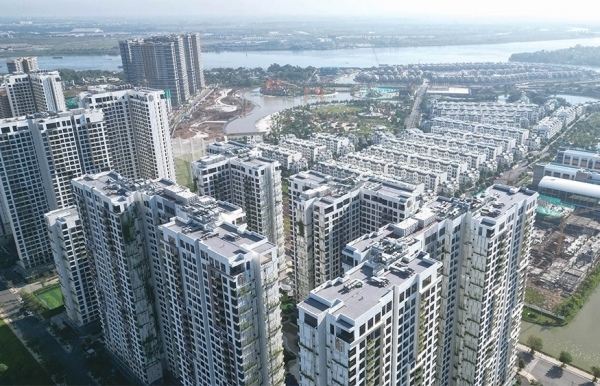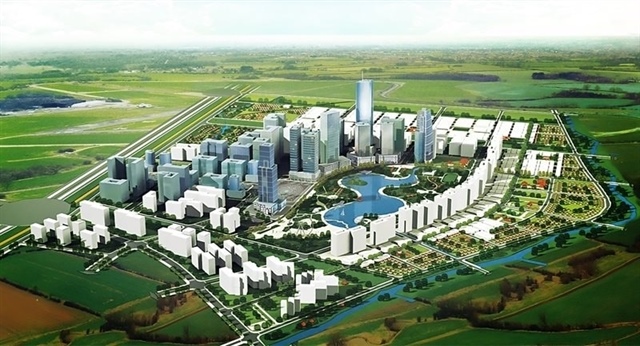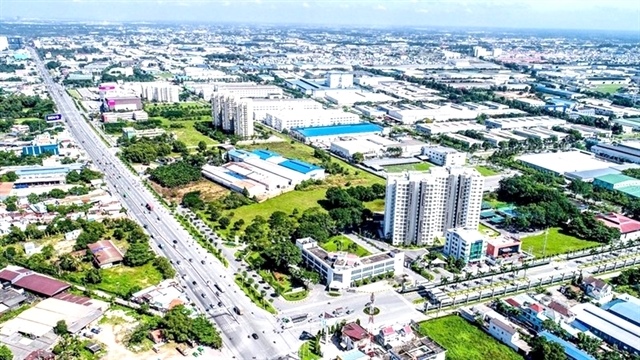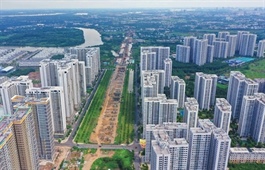Concrete steps to make for sustainable housing model
Concrete steps to make for sustainable housing model
With housing prices rising far beyond what average Vietnamese earners can afford, the debate around housing policy has gained fresh urgency. Trinh Ha, a financial market analyst from Exness Investment Bank, gave VIR’s Phuong Thu practical insights from the Malaysian housing model and its implications for Vietnam’s real estate and urban development agenda.
Urban housing prices in Vietnam have been rising steadily in recent years, creating growing concern about affordability. What long-term implications could this trend have if left unaddressed?

Trinh Ha, a financial market analyst from Exness Investment Bank |
When housing prices rise at a pace far beyond income growth, the economic consequences are not limited to the real estate sector. They spill over into broader social and demographic dynamics.
Firstly, the rising cost of housing puts intense pressure on household finances, reducing disposable income for other essential spending such as education, healthcare, and child-rearing. This in turn leads to lower quality of life, declining birth rates, and ultimately a shift in population structure that could threaten long-term economic stability. We’re already seeing signs of this in major cities in Vietnam.
Secondly, it dampens domestic consumption, a vital growth driver in a transitioning economy like ours. When people divert most of their income to housing, they cut back on other forms of spending, slowing down economic momentum.
Thirdly, Vietnam risks falling into the middle-income trap. For years, our comparative advantage in low-cost labour and youthful demographics has helped us ride the global manufacturing wave. But if housing becomes a bottleneck discouraging both skilled labour and domestic consumption, that advantage could quickly erode.
The Vietnamese government is aware of the risks and has begun exploring new strategies to make housing more accessible. But for any policy shift to succeed, it must be bold, data-driven, and equitable.
In contrast, Malaysia is often cited as a country where the housing market remains relatively affordable. What key factors have enabled this, and how does it compare to Vietnam?
Malaysia’s housing market is a useful case study because it combines market-based mechanisms with targeted state intervention. A few structural elements stand out.
To begin with, the price-to-income ratio in Malaysia remains manageable, just over seven times the average annual income. By contrast, in Hanoi or Ho Chi Minh City, that ratio can easily exceed 18–20 times, making homeownership increasingly out of reach for most working-class families.
Malaysia’s mortgage interest rates are also relatively low, hovering between 3 and 4 per cent, compared to double-digit rates in Vietnam in recent years. This improves affordability and loan accessibility for middle-income families.
Most importantly, the supply side of Malaysia’s housing market is well-structured. There is a consistent pipeline of affordable housing units across various price bands in the country. As of 2024, the average home price is about VND2.5 billion ($96,000), and more than 60 per cent of new units are priced under VND2 billion ($77,000). This kind of segmentation allows the market to serve a broad base of demand, not just high-end buyers or investors.
Malaysia has also invested in public transportation and adopted a transit-oriented development model early on. This helps decongest city centres and spreads urban growth more evenly, keeping land prices from spiralling out of control.
Can you walk us through the specific housing policies Malaysia has put in place to ensure affordability, and which of them might be adaptable to Vietnam’s context?
Malaysia’s housing strategy is rooted in three pillars: robust zoning and land-use regulations, large-scale affordable housing programs, and strong anti-speculation measures.
Their planning and zoning laws are clearly defined and devolved to state governments, allowing flexibility at the local level. New developments are required to allocate a portion, typically 15-40 per cent of their total units, to affordable housing segments. For example, the state of Selangor mandates that at least 30 per cent of units in new residential projects be priced below RM250,000 ($50,000).
Malaysia operates multiple affordable housing schemes, each tailored to different income groups. The PR1MA programme targets middle-income households by offering discounted land, full loan-to-value mortgages, and capped selling prices. For low-income groups, the PPR initiative sells units as low as RM50,000 ($11,500), or offers rental options at subsidised rates. In some states, civil servants and Bumiputera citizens receive additional discounts and land access.
To combat speculation, Malaysia imposes a real property gains tax on short-term transactions. For citizens, selling a property within the first three years of purchase can incur capital gains tax up to 30 per cent. Non-residents face even higher rates. The country also prohibits “deposit flipping” and requires all transactions to go through certified brokers and legal professionals, ensuring transparency and limiting speculative behaviour.
These policies are not only pragmatic, they are also enforceable. Vietnam can certainly draw from this multi-pronged approach, adapting it to our institutional context.

Vietnam needs to mandate a minimum percentage of land in large-scale residential developments for affordable housing |
Could you elaborate on how land-use policies and development regulations in that country contribute to a more balanced market, and whether these lessons are relevant to Vietnam?
Malaysia has adopted a well-structured approach to urban planning, where land-use classifications such as residential, commercial, and agricultural are clearly defined and enforced. Importantly, each state has autonomy over land matters, which allows them to tailor policies to local needs while adhering to national principles.
What makes the Malaysian model particularly effective is its consistency and predictability. For example, even commercial land can be developed into residential housing, but with clear guidelines, such as higher utility fees or limitations on resale within a set period.
Additionally, many states require that a significant portion of units in new residential developments be allocated to affordable or social housing segments 30 per cent in Selangor and up to 40 per cent in Johor, for instance.
The key here is that these ratios are not just recommendations. They are embedded in local zoning codes and development permits. This ensures that affordable housing is not an afterthought, but a built-in component of urban growth.
For Vietnam, this offers a valuable precedent. We need a more transparent and enforceable framework for integrating affordable housing quotas into urban development plans. Clear land-use rules, combined with development incentives and legal certainty, can help unlock more equitable growth without sacrificing market efficiency.
Given Vietnam’s current policy and market realities, what concrete steps should be taken to move towards a more inclusive and sustainable housing model?
There are several actions that Vietnam can prioritise right now, some are regulatory, some are institutional, and others are market-oriented.
Firstly, Vietnam needs to mandate a minimum percentage of land in large-scale residential developments for affordable housing. A threshold of 20–30 per cent would be a good start, especially in projects over one hectare. This should be tied to legal requirements with clearly defined penalties for non-compliance.
The government should also provide real fiscal incentives to developers building social housing, such as exemption from land use fees, fast-track permitting, or direct land allocation at subsidised rates. Without this, private sector participation will remain limited.
Next, we urgently need to develop a centralised, transparent housing price database. This would empower consumers and help policymakers monitor speculative bubbles in real time.
Vietnam should follow Malaysia’s lead in taxing short-term property gains and discouraging flipping behaviour. Combined with bans on transferring deposits before ownership is finalised, this could reduce speculative pressure and restore stability to the market.
Finally, we must professionalise the real estate brokerage sector. Granting licences, enforcing disclosure, and requiring all transactions to go through certified exchanges would go a long way in protecting buyers and improving market efficiency.
Housing is both an economic asset and a social foundation. If Vietnam wants sustainable growth, we need to make sure housing works for the majority, not just the wealthy or the speculative investor.
- 09:50 16/06/2025




























